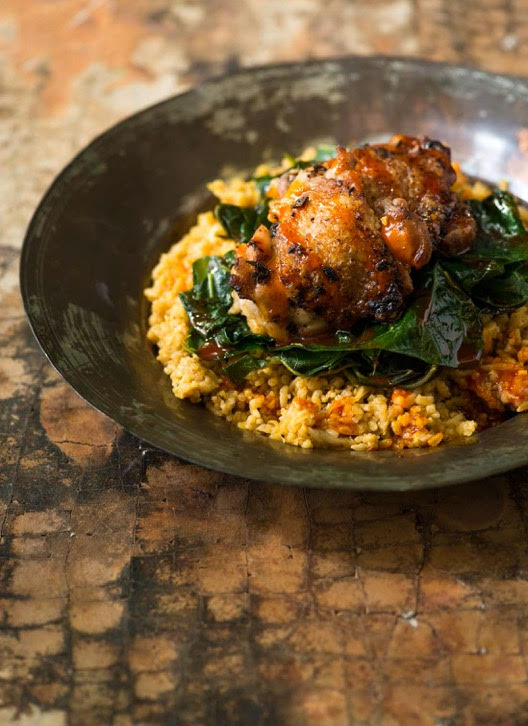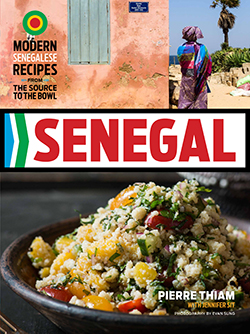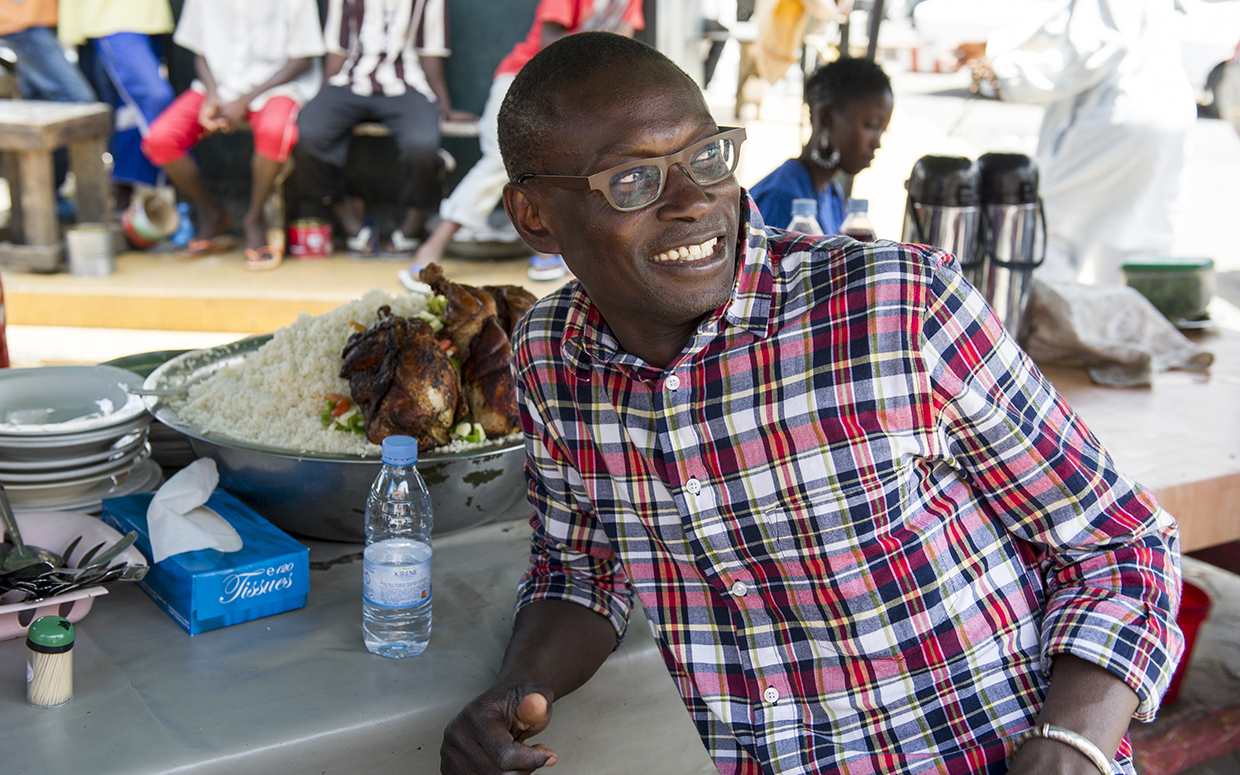
I first learned of Kwanzaa after graduating from college, when a Nigerian-American friend invited me over to her family’s dinner to celebrate the occasion. Years later, I would celebrate Kwanzaa in my home and use it as an opportunity to explore cuisines from the African diaspora: Caribbean, South American and Southeast Asian while contemplating on one of the daily principles. This year, our Kwanzaa could be influenced by Senegal because of the beauty of Pierre Thiam’s cookbook, From Senegal: Modern Senegalese Recipes from the Source to the Bowl.
Not only is Thiam’s cookbook full of captivating photos of Senegalese people, landscapes and food, it’s reads similar to a travel journal. The recipes are adaptable to the average American kitchen and found in most grocery stores (thanks to our expanding global influences). Some ingredients are only found in specialty stores or online, such as fonio grain (could this be the next trendy grain in a few years?). In addition, Thiam shares his version of joloff rice, a popular West African rice dish, and he explains Senegalese’ history of rice production (to learn more about rice production in Africa, I recommend BLACK RICE: The African Origins of Rice Cultivation in the Americas by Judith A. Carney.)
In the following Q&A, Thiam shares his knowledge about global influences in Senegalese cuisine, traditional ingredients and offers a wine pairing with his Chicken Thighs served with Red Palm and Coconut Rice, a twist of thiebou guinaar, that he calls the original jambalaya.
 What inspired you to pursue cooking as career?
What inspired you to pursue cooking as career?
I come from a culture where cooking is a gender based activity, and food is at the center of everything. My mom and my aunts were great cooks but as a boy, the kitchen was a forbidden territory to me. The only man I ever saw cooking in Senegal was my godfather. Because he was of Vietnamese origins, he wasn’t bothered by these cultural restrictions. It’s only when I came to America to continue my studies in Physics and Chemistry that I stumbled into a restaurant job. That was the best thing that ever happened to me. Almost 30 years later, I am still in the kitchen.
What are the cultural influences and/or regional difference in Senegalese cuisine?
Senegal is located at the most western coast of Africa. Because of its geographical location, it’s a natural hub. For centuries, Senegal was the port of entrance to Africa for French, Dutch, English and Portuguese mariners. They each brought some of their cuisines. Casamance, a region in the southern part of Senegal has a strong Portuguese influence. Portuguese creole is widely spoken and dishes with Portuguese sounding names, like Pastels (a spicy fish turnover) or caldou (a lemony fish stew) are current. The French presence is felt all around, but mostly in the northern region of Saint Louis, which used to be the first French colonial capital. Dakar, the capital city, has a vibrant Lebanese community, but also boasts a Cape Verdean and even a Vietnamese one (another heritage from the French colonial past). Of course regional influences are also very strong. Many neighborhood restaurants specialize in cuisines from neighboring countries like Cote D’Ivoire, Cameroon, Mali or Morocco.
What are traditional Senegalese ingredients?
Grains: millet, fonio, our own local rice or sorghum.
Greens: moringa, sorrel, sweet potato or cassava greens.
Legumes: peanuts, yuca, sweet potato, black eye peas, beans and so on
Fruits: baobab, madd, ditakh, mango and so on
Condiments: fermented conch, smoked sardinelles, salted fish, dried fish, fermented locust beans, dried clams, dried oysters and more
What is a particular ingredient available in Senegal that isn’t normally found in the United States that you miss? How do you use or serve it?
I miss a fruit called madd. It’s a sweet and sour fruit that’s found in Senegal during the rainy season. I used to make a relish with it by simply mixing it with cayenne pepper and salt. I also make a delicious sorbet with its juice.

What does modernization of Senegalese recipes mean to you?
It means making it more readily available for today’s conscious consumer. Senegalese traditional diet is a perfect balance of grains, greens and protein. I modernize the recipes by deconstruction and by giving them a lighter approach, while still remaining true to the traditional flavors.
For Kwanzaa, what dish from “Senegal: Modern Senegalese Recipes from the Source to the Bowl” would you recommend?
Chicken Thighs with Red Palm and Coconut Rice (recipe follows this interview). It’s a simple yet rich and festive looking dish (all the ingredients can be found at Whole Foods Market).
Since this is a festive time of year, what type of wine would you pair with the recipe and why?
House of Mandela’s Royal Reserve Shiraz, because it’s spiciness balances well with the richness of the dish.
Thank you, Mr. Thiam, for taking the time to answer the interview questions and share the Chicken Thighs with Red Palm and Coconut rice from your cookbook, From Senegal: Modern Senegalese Recipes from the Source to the Bowl. I wish you and your family a Happy Holiday and Kwanzaa!
From Senegal: Modern Senegalese Recipes from the Source to the Bowl is available on Amazon, Barnes and Noble or Lake Isle Press.
Visit Parade.com’s Community Table to get Mr. Thiam’s recipe for Chicken Thighs served with Red Palm and Coconut Rice here.